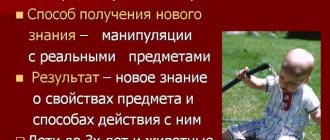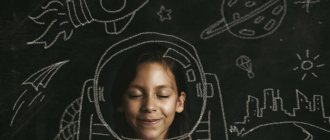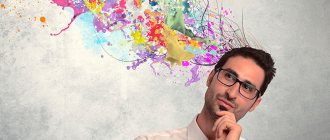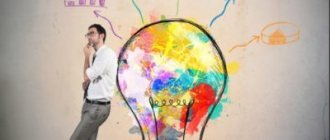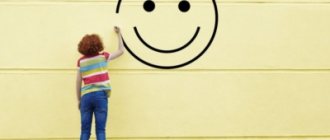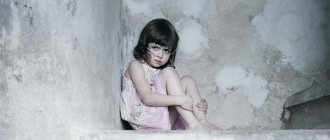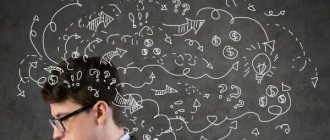Thinking helps us to understand the essence of things, thanks to it we compare and classify, analyze and specify, generalize and highlight the most essential.
According to the content, they divide visual-effective, visual-figurative and verbal-logical (abstract) thinking. We observe the development of visual and effective thinking when a small child begins to explore the world, becoming familiar with the objects around him and manipulating them. By the time a child enters school, as a rule, this type of thinking is fully formed. The most intensive development of visual and effective thinking occurs at the age of three to four years.
The development of visual-figurative thinking occurs at the age of about six to seven years, when children begin to imagine the objects or phenomena around them. Verbal-logical thinking develops even later, as the next stage in the development of thinking, while children learn to reason using concepts.
Visual-figurative and visual-effective are practical types of thinking; they also belong to the group of pre-conceptual thinking. This is due to the fact that they are based on a specific, direct reflection of reality, and the use of concepts is still unconscious, random.
The development of visual thinking in children will subsequently become the foundation for the formation of verbal-logical (conceptual) thinking, which plays a leading role in human life. Adults are capable of all types of thinking, but they can be developed to varying degrees.
Visual form of thinking in preschool age
In psychology, several forms of thinking are distinguished, most of which are formed in adulthood.
Before entering school, children go through the following mental stages:
- clearly effective;
- visually figurative;
- verbal logical thinking.
In the future, the formation of intuitive, analytical and empirical forms continues.
Visual types of thinking are most important for preschool age. It is the successful passage through these stages that provides the future adult with the ability to form judgments about events and draw conclusions.
Clearly effective
Visually effective thinking is fully formed by the age of 3. Starting from the age of one and a half, boys and girls “think” with their hands.
The main features of visually effective thinking are the use of one’s own fingers as a tool of cognition.
Connecting broken halves, breaking or disassembling a toy - all this is a way of primary perception of objects and an opportunity to understand what surrounds a little person. That is why this type of cognition is called visually effective. Mastering an action—for example, stacking cubes into something similar to a structure—occurs after several successful attempts to assemble a turret or house.
Visually figurative
From about 3 years old, a new type of thinking begins to form: in addition to studying the world with one’s hands, a system of images imprinted in memory is added.
This means that the baby can visually reproduce an already familiar object, information about which has settled in memory. The skill of using an image is especially evident during drawing or sculpting.
Detailed image accuracy should not be expected at this age. The preschooler draws exactly those features that, in his opinion, characterize this or that object. The tree will have a trunk and branches. The house must be equipped with a roof and walls.
During this period, it is especially important for parents to encourage their child to engage in any activities related to visualization.
It could be:
- applique made of colored and shiny paper;
- games with constructors;
- drawing with pencils, crayons, paints;
- modeling from clay and plasticine.
Classification and examples
The classification of thinking reflects its development in a person as his nervous system and psyche develop.
There are several types of thinking:
Visually effective
This form develops in humans earlier than others and is typical for children in the first years of life.
The essence of this thinking comes down to specific actions through which the environment is cognized.
At the same time, the individual develops “yes-no” attitudes , that is, which actions carry something useful and important, why it is worth repeating them and telling them “yes”, and which ones, on the contrary, can cause harm, so they should be avoided .
In this way, the first experience based on actual knowledge is formed.
The development of this type of thinking is no coincidence in early childhood, when the child learns about the world through the senses and his own manipulations: crawling, touching, tasting and touching.
In this case, sensations arise from all senses, which creates the information base for this type of thinking.
However, it is also relevant in adulthood, but as an element of thinking: observing the actions of an object forms a visual image, and one’s own active experience also works.
We can say that this type is more primitive and simple, but is quite effective in certain situations : learning motor skills, mastering work that requires fine motor skills, imitative learning and behavior.
Example : recognition of moving objects by a child by a characteristic sound (mother’s voice), in adulthood avoiding contact with aggressive people or an angry dog in order to avoid conflict (undesirable consequences have been established experimentally, by action, or such have been observed).
Visual-figurative
It is formed next , at the age of three years. With this type of thinking, there is no longer a need to touch an object and perform some action with it; instead, a person begins to imagine how he would do it and feel it.
That is, the individual forms images. And this is no coincidence. In early childhood, there is a rich accumulation of information obtained strictly experimentally by “examining” and “feeling” the surrounding world.
Upon reaching a certain amount of such knowledge, the child begins to think through and imagine both a phenomenon or object, and an entire situation. Closely related to this is the rapid development of imagination in childhood, which can also be represented as visual-figurative thinking.
At the same time, there is still no ability to abstract from the situation and add a conceptual perception of reality.
Visual-figurative thinking in adulthood is actively used by people in creative professions , as well as in everyday life, which includes direct observation of the world with the help of ideas and images in conditions of lack of information.
Example : presentation of the result of a simple mosaic when playing for children; for adults, planning the interior of an apartment in accordance with the images.
Subject-specific
It occupies the next step in the evolution of thinking and is actively formed at the age of 5-7 years.
It is also called concrete-actional because the implementation of this thinking is carried out in some professional working or training conditions, when a person models an action based on ideas and images.
In this way, skills are developed in childhood and the work and educational process in older age is structured.
This type is, as it were, a synthesis of the two previous ones: knowledge of the world occurs through action, and this is also the final result, but this is realized with the help of visual, concrete images.
Example : learning to ride a bicycle or swimming for a child, for adults, completing a plan, task at work or school.
Abstract-logical
It is the crown of development and is formed at an older age, when skills such as the ability to formulate concepts and abstractions develop.
In this case, a person does not need to see or imagine anything based on experience; he is able to synthesize information himself by comparing the available data.
Abstraction is a complex process of representing concepts and phenomena that cannot be seen in the surrounding natural world. Logic is an abstract example.
In this case, logical connections, identification and construction of patterns are actively used. This type of thinking is based on the developed mental abilities of the individual and his emotional maturity.
In adults, abstract logical thinking is a leading component of working professional life, but its formation begins in adolescence.
Example : solving mathematical and logical problems, scientific activities.
In an adult, all of these types of thinking can be used in certain situations when they are appropriate.
How visually effective thinking develops in preschoolers
Supporting the development of visually effective and imaginative thinking in preschoolers is simple: the key goal of parents is not to interfere with the dismantling or “modernization” of objects. The only limitation is security measures. Materials should be as harmless as possible for younger preschoolers.
Object actions do not immediately lead the child to understand the main features and purpose of the object. It takes time and repeated manipulations for the child’s mind to grasp visual generalizations and build the necessary connections.
For example, if a preschooler made his first attempts to draw with a pencil, then when he sees colored crayons he will not imagine their purpose without preliminary tests.
It is especially effective to form the memory of images with the help of flowing and bulk materials. The child pours sand from hand to hand, makes slides from cereals, and pours water. Constant touching allows him to first determine and then remember that if the sand is properly crushed, it will turn out to be a Easter cake.
To summarize what has been said, the basic principle of the development of this form of thought process is expressed in repeated actions leading to the same result: a picture, an assembled toy, a sculpted figurine.
This is how the first ideas about specific objects and life experience arise, which lay the foundation for the development of mental forms.
Mental operations
Observing how a child’s thinking develops, the entire thought process can be divided into stages:
- comparison;
- analysis;
- synthesis;
- generalization.
At the comparison stage, the child learns to find the same in different things, different in the same. During this period, it is appropriate to give “find the differences” pictures and play memory games (start with 6 pairs of pictures, gradually increasing the number).
At the analysis stage, features, qualities, properties, materials and objects used are identified. In his imagination, a child can divide any product into its component parts.
The synthesis stage is closely related to the analysis stage. Without analysis it will not be possible to synthesize. An example of this is reading. Without remembering letters, without understanding how they merge into syllables, a child will not be able to read.
Vivid signs of generalization are the identification of common characteristics of objects and grouping. As soon as a child develops coherent speech and the use of a large number of generalizing concepts, you know that the generalization stage has begun.
Formation of visually imaginative thinking
The basis of visual figurative thinking is a guess about a possible result. Before taking an action, the child imagines the end result. For example, sitting at home, a preschooler is able to draw a picture of a car, remembering the one he liked on the street.
The first rudiments appear at 3 years. To evaluate the result, tactile contact with the object is no longer always necessary. The image in the head helps to correlate the object seen with an already known category and correctly evaluate it. A preschooler can easily recognize a doll or teddy bear on a display window without having to touch it first.
The greater the number of objects that are remembered, the less often tactile contact will be required for identification, but the connections and relationships between the image and the real object will be realized.
Games and exercises for the development of imaginative and logical thinking
- “What does it look like?” Show your child a picture of a fancy blot. Let the child come up with as many original associations for it as possible.
- "The fourth is odd." Invite your child to look at 4 pictures, three of which can be combined according to some characteristic. The child must understand which picture is “extra” and explain why he thinks so.
- “Call it in one word.” This game consists of an adult offering the child a set of words or images that can be combined into a concept. The child’s task is to name objects in one word (for example, tit, nightingale, woodpecker, crow, hawk - birds; raspberries, gooseberries, strawberries, watermelons - berries).
- “Put it into groups.” An adult places pre-prepared objects or their images on the table and mixes them. The preschooler must sort them into groups according to some characteristic.
- “Fold the picture.” This didactic game is an analogy to puzzles. The child’s task is to put together a whole picture from several parts.
- "Sudoku". This puzzle, popular all over the world, in its simplified version (2x2, 3x3 or 4x4), is also suitable for preschoolers.
- “Who eats what?” Select pictures depicting animals and their favorite delicacies, mix them, and then ask the child to make pairs (feed the animals). By analogy, you can play games such as “Moms and Their Babies”, “Who Lives Where?”, “Signs of the Seasons” and so on.
- “Continue the row.” Draw long beads and start a sequence of bead colors (for example, red, yellow, blue, red again). The child must color the rest of the beads, following the pattern.
To make it interesting and fun for your baby, try to introduce your child to new games and exercises every time.
- "Opposites". In this game, the child needs to come up with a word with the opposite meaning. For example, you say the word “big”, and the child says “small” (“cheerful” - “sad”, “loud” - “quiet”, “fast” - “slow”, and so on).
- "Guess what it's about." This game will help develop not only thinking, but also attentiveness. Describe one of the objects in the room, and the child must guess what it is about. For example, a fragile, glass, beautiful vase.
For other useful games and exercises, watch the video:
Board games (checkers, chess, strategy games), mazes and puzzles are also suitable for developing the thinking of preschoolers. Such games allow kids to learn how to make decisions, think through moves, and assess possible risks. Role-playing games, communicating with peers, reading and discussing books are also great for developing creative thinking.
Why is it important to develop creative thinking?
The very concept of “image” means the imprinting of objects and phenomena of the real world in human consciousness, the formation of an imaginary appearance.
A preschooler, especially an older one, is already able to accumulate a sufficient number of such reflections. Moreover, sometimes they are not visual, but tactile or audio in nature.
The skill of imaginative thinking greatly simplifies a child’s interaction with the outside world. To solve a given problem, he just needs to imagine all its components and find the answer.
In the future, properly developed imaginative thinking will make it easier to master spatial thinking and imagine the world in three-dimensional display.
It is especially important to pay attention to the child at the stage of development of imaginative thinking for the following reasons:
- The ability to operate with images significantly speeds up the solution of first everyday, and later logical and mathematical problems.
- The ability to think in images forms the aesthetic component of the personality and the craving for beauty, which intensifies as one grows older.
- Operating with images contributes to the development of creative thinking.
How to develop a preschooler's thinking
The development of thinking occurs through play, as this is the leading type of activity. You can beat everything. From a pedagogical point of view, it should be developed in different directions. Involve your child more in housework.
Check out the table; it contains the main types of exercises for developing thinking in children, which we focus on in our classes.
| Types of activities | Description |
| Memory development task | Memorizing image elements, sequence of details, etc. |
| Logic exercises | Find what is missing, identify a pattern using analysis, comparison, reasoning |
| Classification tasks | Sorting, grouping by characteristics, etc. |
| Exercises for concentration | Finding identical properties, differences between objects, images, etc. |
| Tasks for the development of spatial perception | Development of visualization, spatial arrangement, solving puzzles and puzzles |
| Exercise to develop analytical skills | Search for details that are superfluous or not true |
| Tasks for the formation of a strategic approach | Thinking through a whole chain of actions. Analysis of sequences and results |
Ways to develop visually imaginative thinking
Depending on the age and preferences of the child himself, various methods are chosen, however, each is based on creating a result based on the presented image.
At the age of three, this is a game with a pyramid and similar collapsible toys. To begin with, the adult shows the process of disassembling and correctly assembling the toy, after which the child is asked to repeat the steps.
To complicate the task, you will need a pyramid with rings of various sizes. An additional effect of the toy is learning to highlight the essential properties of objects, distinguish between sizes, shapes, and shades. It can be stated that the process of developing imaginative thinking has begun when, before an action, the child is able to tell what he will now build or draw.
Basic methods applicable in older preschool age
In the future, the imaginative thinking of older preschoolers should be stimulated using the following methods and techniques:
- observation of nature with subsequent descriptions and displays of what was seen;
- comparative analysis of objects of various sizes and shapes;
- collecting puzzles with gradual complication of the task;
- drawing from memory;
- creative work with plastic materials - modeling from clay, plasticine;
- excursions to museums and exhibitions;
- displaying on paper or canvas concepts that do not have visual signs: love, friendship, thought, sound, melody;
- creating panels using natural materials, cardboard, colored paper.
The effectiveness of classes aimed at developing visual imaginative thinking in preschool age depends on the correct implementation of the stages of learning:
- demonstration;
- description or explanation;
- Team work;
- independent work according to the model;
- creativity based on a generalization of ideas about a phenomenon, not limited by any framework.
Any activity should not tire the child. As soon as he feels tired, he needs to switch his attention to another activity. In addition, it is important to constantly encourage and motivate the child, cultivating in him a true passion for the process of drawing or constructive creativity.
Article:
Thinking is the process of indirect and generalized cognition (reflection) of the surrounding world.
Its essence lies in the reflection of: 1) general and essential properties of objects and phenomena, including properties that are not directly perceived; 2) significant relationships and natural connections between objects and phenomena. Basic forms of thinking
There are three main forms of thinking: concept, judgment and inference.
A concept is a form of thinking that reflects the general and, moreover, essential properties of objects and phenomena.
Every object, every phenomenon has many different properties and characteristics. These properties, signs, can be divided into two categories - essential and non-essential.
Judgments reflect connections and relationships between objects and phenomena of the surrounding world and their properties and characteristics. Judgment is a form of thinking that contains the affirmation or denial of any position regarding objects, phenomena or their properties.
Inference is a form of thinking in which a person, comparing and analyzing various judgments, derives a new judgment from them. A typical example of inference is the proof of geometric theorems.
Properties of thinking
The main properties of human thinking are its abstraction and generalization. Abstract thinking consists in the fact that, thinking about any objects and phenomena, establishing connections between them, we single out only those properties and signs that are important for solving the issue facing us, abstracting from all other signs, in this case us not interested: while listening to the teacher’s explanation in class, the student tries to understand the content of the explanation, highlight the main ideas, and connect them with each other and with his past knowledge. At the same time, he is distracted from the sound of the teacher’s voice and the style of his speech.
Abstract thinking is also closely related to its generality. By highlighting the most important aspects, connections and relationships that are significant from one point of view or another, we thereby focus our thoughts on that common thing that characterizes entire groups of objects and phenomena. Each object, each event, phenomenon, taken as a whole, is unique, as it has many different aspects and characteristics.
Types of thinking
In psychology, the following simplest and somewhat conventional classification of types of thinking is common: 1) visual-effective, 2) visual-figurative and 3) abstract (theoretical) thinking. Thinking is also distinguished between intuitive and analytical, theoretical, empirical, autistic and mythological.
Visual-effective thinking.
In the course of historical development, people solved the problems facing them first in terms of practical activity, only then did theoretical activity emerge from it. Practical and theoretical activities are inextricably interconnected.
Only as practical activity develops does it emerge as a relatively independent theoretical mental activity.
Not only in the historical development of mankind, but also in the process of mental development of each child, the starting point will be not purely theoretical, but practical activity. It is within this latter that children's thinking first develops. In pre-preschool age (up to three years inclusive), thinking is mainly visual and effective. The child analyzes and synthesizes cognizable objects as he, with his hands, practically separates, dismembers and reunites, correlates, connects with each other certain objects perceived at the moment. Curious children often break their toys precisely in order to find out “what’s inside.”
Visual-figurative thinking.
In its simplest form, visual-figurative thinking occurs primarily in preschool children, i.e., at the age of four to seven years. Although the connection between thinking and practical actions is preserved, it is not as close, direct and immediate as before. During the analysis and synthesis of a cognizable object, a child does not necessarily and does not always have to touch the object that interests him with his hands. In many cases, systematic practical manipulation (action) with an object is not required, but in all cases it is necessary to clearly perceive and visually represent this object. In other words, preschoolers think only in visual images and do not yet master concepts (in the strict sense).
Abstract thinking.
On the basis of practical and visual-sensory experience, children of school age develop, first in the simplest forms, abstract thinking, that is, thinking in the form of abstract concepts.
Mastering concepts as schoolchildren learn the fundamentals of various sciences - mathematics, physics, history - is of great importance in the mental development of children. The formation and assimilation of mathematical, geographical, physical, biological and many other concepts during school education are the subject of numerous studies. The development of abstract thinking in schoolchildren during the assimilation of concepts does not at all mean that their visual-effective and visual-figurative thinking now ceases to develop or disappears altogether. On the contrary, these primary and original forms of all mental activity continue to change and improve, developing together with abstract thinking and under its influence.
Intuitive and analytical thinking.
Analytical thinking is characterized by the fact that its individual stages are clearly expressed and the thinker can tell another person about them. An analytically thinking person is fully aware of both the content of his thoughts and the operations that comprise them. Analytical thinking in its extreme form takes the form of careful deductive inference.
Intuitive thinking is characterized by the fact that it lacks clearly defined stages. It is usually based on a compressed perception of the entire problem at once. The person in this case arrives at an answer, which may be right or wrong, with little or no awareness of the process by which he arrived at that answer. Therefore, the conclusions of intuitive thinking need to be verified by analytical means.
Intuitive and analytical thinking complement each other. Through intuitive thinking, a person can often solve problems that he would not have solved at all or, at best, would have solved more slowly through analytical thinking.
Theoretical thinking.
Theoretical thinking is thinking that does not lead directly to practical action. Theoretical thinking is contrasted with practical thinking, the conclusion of which is, as Aristotle puts it, action. Theoretical thinking is guided by a special attitude and is always associated with the creation of a specific “theoretical world” and drawing a fairly clear boundary between it and the real world.
Empirical thinking.
We can distinguish at least three vital functions of empirical thinking.
Firstly, empirical thinking provides a person with an awareness of similarities and differences. The most important task of thinking when faced with an infinite variety of sensory-given properties and relationships of things is to separate them, to focus on what is similar and different, and to highlight a general idea of objects.
Secondly, empirical thinking allows the subject to determine the measure of similarity and difference. Depending on practical and everyday tasks, a person can define the same objects, phenomena, situations as more or less similar and different.
Thirdly, empirical thinking makes it possible to group objects according to generic relations and classify them.
Ways to develop thinking
Development of visually effective thinking in children.
By the age of 5-6 years, children learn to perform actions in their minds. The objects of manipulation are no longer real objects, but their images. Most often, children present a visual, visual image of an object. Therefore, a child’s thinking is called visual-effective.
To develop visual and effective thinking, the following techniques should be used when working with children:
1) Learning to analyze a visual image (an adult can draw the child’s attention to individual elements of objects, ask questions about similarities and differences).
2) Learn to identify the properties of objects (children do not immediately understand that different objects can have similar properties; for example: “Name 2 objects that have three characteristics at once: white, soft, edible”).
3) Learning to recognize an object by describing possible actions with it (for example, riddles).
4) Learning to search for alternative methods of action (for example, “What to do if you need to find out the weather outside?”).
5) Learning to compose narrative stories.
6) Learning to make logical conclusions (for example, “Petya is older than Masha, and Masha is older than Kolya. Who is the oldest?”).
Development of logical thinking in children.
To develop logical thinking in preschool children, the following techniques are used:
1) Teaching a child to compare objects (for example, “Find 10 differences in the following pictures”).
2) Teaching a child to classify objects (for example, the game “What’s extra?”).
3) Teaching a child to search for identical properties or signs of objects (for example, among toys, invite the child to find 2 identical ones).
Development of logical thinking in children of primary school age:
1) The use of exercises aimed at developing the ability to divide objects into classes (for example, “Read the words (lemon, orange, plum, apple, strawberry) and name the berries and fruits”).
2) Formation of the ability to define concepts.
3) Formation of the ability to identify essential features of objects.
Thinking acts mainly as a solution to tasks, questions, problems that are constantly put forward to people by life. Solving problems should always give a person something new, new knowledge. Finding solutions can sometimes be very difficult, so mental activity, as a rule, is an active activity that requires concentrated attention and patience. The real process of thought is always a cognitive process.
Bibliography:
1. Brief psychological dictionary / ed. A. V. Petrovsky, M. G. Yaroshevsky. – Rostov-ND, 1998.
2. Gippenreiter Yu. B. Introduction to general psychology: Textbook / Yu. B. Gippenreiter. - M.: Omega L, 2006.
3. Tertel A. L. Psychology. Course of lectures: Textbook / A. L. Tertel. – M.: Prospekt, 2006.
4. Diagnosis and correction of mental development of preschool children: Textbook/Ed. Y. L. Kolominsky, E. A. Panko. – Mn., 1997.
5. Uruntaeva G. A. Workshop on child psychology: Textbook / G. A. Uruntaeva, Yu. A. Afonkina. – M.: Education, 1995.
Diagnostic and study methods
Characteristics of levels, starting with objective perception
A child receives his first impressions of the world around him after birth. Gradually, his worldview is replenished with new sensations and images (read more about what imaginative thinking is, why it is needed, and from this article you will learn why you need to improve this way of thinking in adults and children).
The thinking of a little person consists of the concept of the properties of an object, comparing data, searching for differences, and obtaining new sensations. His parents help him in this, sharing their knowledge, teaching and educating him. With the ability to move independently, the baby expands his capabilities in exploring the world, adding new images to it. The child analyzes and systematizes the entire stock of information, creating his own picture of the world.
Closer to one year, the baby, through practical actions, trial and error, receives new information and learns the properties of objects. From one to two years - combines and operates with objects. At the same time:
- learns to understand speech;
- develops memory;
- auditory and visual perception.
By 3 years old the baby:
- significantly increases memory capacity;
- improves speech;
- learns to solve practical problems using the information received.
Manifestation of pathological variants and their correction
Attention. In children with mental disabilities, sensorimotor thinking is characterized by a lag. They do not have the skill of generalizing their experience in actions with everyday objects. Without the help of an adult, they are not able to analyze and discard erroneous options, thereby not being able to achieve their goal.
“Special” children do not have the need to connect action with speech, which indicates that their manipulations are not conscious. This is a feature of the development of oligophrenics and autists. Timely correction of these pathologies gives good results.
In adults, serious violations can manifest themselves in a rollback to the visual-effective period of thinking. Characterized by obsessive repetitive movements and manipulation of objects. It appears in schizophrenics and catatonics.
Examples of practical diagnostic methods: how is it possible using cubes and other methods?
With the help of diagnostics, specialists are able to determine the integrity of a child’s intelligence. Some techniques are:
- "Pyramid addition" . The inspector shows the child the pyramid and asks him to disassemble it, then assemble it, taking into account the size of the rings. If the subject does not understand it, the experimenter shows how to do it and asks the child to repeat his actions. If the child does something wrong, they do not stop him; they explain his mistakes and ask him to redo it. Instead of a pyramid, you can build towers from cubes or objects from a constructor.
- Seguin board" is a board with recesses for different figures. The difficulty depends on the age of the subject. Older children are offered boards where the inserts consist of several parts. The psychologist shows the child the assembled board, then pours out the contents and offers to assemble it.
- “Get the cart” - a cart with a ring through which a rope is threaded is placed on the table. The child’s task is to pull the cart towards him by folding both ends of the rope. Adults don't show you how to do things right. If the rope slips, it is corrected out of sight of the person being tested. Suitable for children aged 4-5 years.
There are quite a few similar research methods. Each psychologist himself selects the closest and most informative diagnostic method to him.
